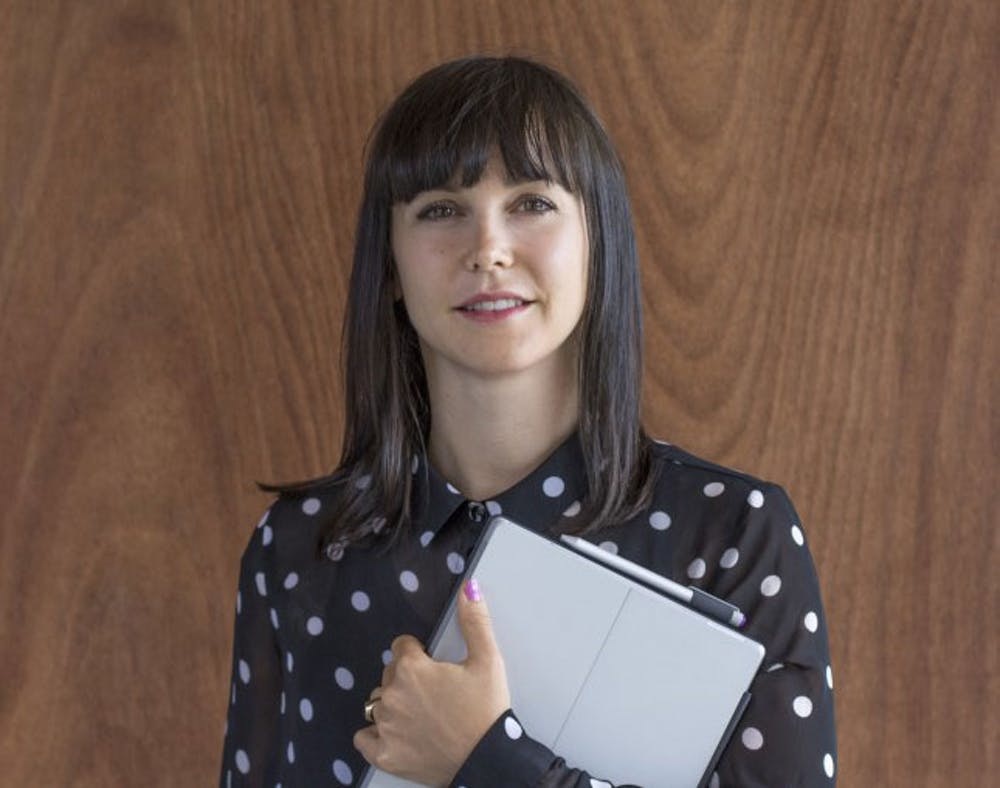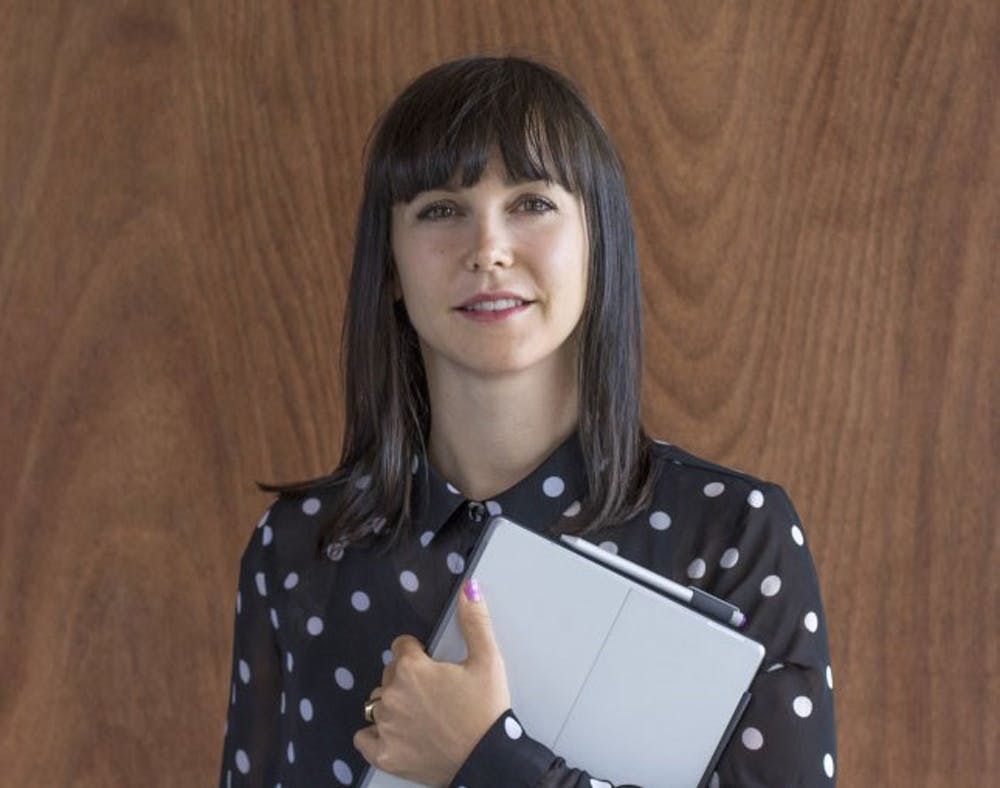Kate Bailey, one of the masterminds behind Microsoft’s Surface, is a brilliant designer. If you haven’t gotten to play with the tech company’s newest toy, you need to head over to the nearest Microsoft store, stat.
The Surface was created to give you more options when it comes to your tablet. Essentially, it replaces the need for having both a tablet and a laptop. With the Surface, you have both functions in one device. Read on to learn more about Kate’s latest creation, her inspirations and her favorite thing about working at Microsoft.
Tell us a bit about yourself and your background.
I am an Industrial Designer for Microsoft, and my team is responsible for creating the hardware for the Microsoft Surface.
How did you get involved with Surface and Microsoft?
I was working in SF on a Microsoft project when I had a chance to meet Young Kim, one of the members of the Microsoft hardware team. He brought me in for an interview and I was hooked. I designed computer accessories with that team for about three years before I was asked to come on board for a secret project. That project was Surface.
Tell us about what you do on a day-to-day basis.
I spend a lot of my time communicating ideas and keeping track of a lot of technical details. At Microsoft, a designer follows a project from concept to mass production, so my typical day changes depending on where I am in the design process. In the concept phase, it’s all about illustrating an idea, mocking up the prototype and quickly moving CAD. We share that database with our mechanical engineers, who we work very closely with to bring our concept to life. In the final phase of the project, we’re on site at the factory making sure every detail is perfect. Overall, our team’s goal is to deliver a beautiful device that matches peoples’ lifestyles and helps them be productive in their own unique way.
What does the process look like in creating something like this?
There are a few key things we think about when we design products. First and foremost, we think about how people are actually going to use it, what purpose is it serving and what need is it meeting. When tablets went mainstream, we started to see more and more people get comfortable with a touch-first experience. Tablets were great for surfing the web and watching movies, but when you actually wanted to get something done (type an email or edit an Excel document) the experience just wasn’t there. That was really the inspiration for Surface — to build a tablet that lets people do more.
Secondly, we think about what the product looks and feels like. When we designed Surface, we knew it needed to be slim and portable; easy to fit into your day. We wanted it to integrate into your everyday handbag, just as your sunglasses do. And just like the bag you choose, we wanted people to feel a connection to the product… so color is very important! Technology can feel very foreign, but when you can customize your device with colorful keyboards and see the vibrant Live Tiles that are personalized with the information you care about, it feels much more YOURS. We were very thoughtful with the design. Multi-tasking features like the keyboard cover, built in kick-stand and Surface Pen had to seamlessly fit into the product without being clunky or getting in the way of another important feature.
Where do you get your inspiration?
I’m inspired by people. I’ll take just about any opportunity to talk to a stranger. I ask them open-ended questions and try to understand their point of view, why they do what they do, what makes them tick. Then I try to bring that perspective into the design process. We are always putting the people, their needs and their wants at the center of these high tech creations.
What’s your favorite thing about your job?
I work with truly brilliant people and learn every day.
In five words or less, tell us why you love to design technology.
Creating new experiences and products that enable people to do more. (Sorry, that’s more than five words!)
What other hobbies do you have? Do they influence your work?
I have a really big appetite for design. I spend my nights and weekends working on concept projects that fall somewhere between art and design. You can see those projects here.
What’s up next for you?
Continuing to work on the Surface family of devices!
Would you forgo your tablet and laptop to get a Surface Pro 3? Let us know in the comments!


